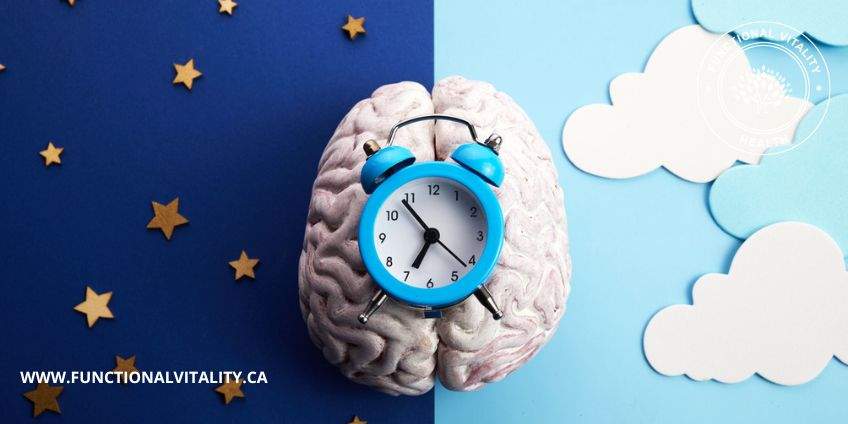Health Coach Tips, by Melanie Rathbun, NBC-HWC, FMCHC, CFNC, RHN
The days are shorter, time changes have occurred, and I think it’s fair to say we’re all adjusting to the shift. You’ve likely heard about circadian rhythms, but what does that mean for you and how can you best maximize yours this winter?
Our circadian rhythm simply put is the natural flow of our (approximate) 24-hour internal clock. This is our daytime and nighttime rhythm, sleepy at night and awake during the day. If you understand your pattern, you can learn when your body’s peak time is for productivity, working out and resting, thereby, supporting optimal health. Here are five tips you can implement today:
1. Morning sunlight – Our circadian rhythm is directly related to light cycles, and sunlight is the system that regulates our bodies sleep-wake cycle. Day after day we are indoors surrounded by artificial light which can be harmful to our bodies (and moods!) long term. Just 10-20 minutes outdoors (ideally around sunrise) is enough to calibrate this cycle. Want better sleep? Get outside, especially in the morning to kickstart your wake cycle, even if that’s just stepping out for a short walk while enjoying your morning coffee or stepping out onto the balcony between meetings. Just because we’re moving into Winter doesn’t mean you can’t purpose to still get outdoors. I like to say there’s no such thing as bad weather, just bad clothing for the type of weather so bundle up and enjoy what nature has to offer, year-round.
2. Move your body – numerous studies have shown that exercise improves sleep quality. Exercise helps manage stress and anxiety, two things that can work against us. When you exercise you release feel-good chemicals that combat stress and anxiety. It tires you out and pushes you to sleep more at night. It can be beneficial to keep the higher intensity activities to earlier in the day, and light walking, yoga etc. to the evening at least an hour before bedtime. You will know what works for you by how easily you can sleep that night.
3. Caffeine – there is this term you may have heard called “sleep pressure” which is the buildup of adenosine, a molecule in the body that helps us nod off at the end of the day. We want this gradual buildup in order to stay on track with our sleep cycle. Caffeine battles with adenosine and inactivates those sleepy receptors, blocking the signal to the brain. When we sleep, adenosine evacuates from our body and the cycle begins all over again the next day. I personally love a morning cup of quality organic coffee, and there are health benefits involved such as antioxidants, but if carried too late into the day it can impact sleep at night due to being a stimulant. 1-3 cups can be a nice balance but try to cut it off 12 hours before bedtime. Caffeine has a half-life which means 50% of the caffeine is still in the system 5-6 hours after your last cup. If you drink coffee in the afternoon, sleep may become unstable and fragmented with caffeine on board affecting quality in a significant way. People can metabolize caffeine at different rates however; at either a slow or rapid rate. Ask your health coach to better understand your own DNA as it relates to this, as we know there is a specific gene CYP1A2 that is associated with caffeine metabolization.
4. Have a consistent sleep routine – we unfortunately cannot bank sleep, or make up for it on weekends, which means consistent time to bed and rising times are key throughout the week. A wind down routine before bedtime can be beneficial for triggering our brains and bodies to prepare for sleep:
- Stop eating at least 1-3 hours before bed and try to avoid foods that are too heavy and will affect digestion.
- Avoid news and negative media, and stressful or intense conversations in the later part of the evening.
- Turn off screens and avoid stimulating blue light.
- Dim the house lights at least an hour before bed.
- Have a relaxing Epsom salt bath and read an enjoyable book.
- Utilize an Oura Ring and learn the various inputs for balancing sleep. It can be a fabulous device in your health toolbox. I can show you how to make slight tweaks to your routine over time that can have profound impacts on your day to day performance.
5. Sleep in a cool dark cave –
- Temperature – a cooler room, around 18.3 C (65 degree F) is a good target for adults. It’s easier to fall sleep and stay asleep when our core temperature has the ability to drop.
- Lights out – ensure the room is completely dark. Turn digital clocks around so it’s not staring at you if you wake in the night and cover any remaining lights with black tape. Even tiny bits of light can halt the production of melatonin needed for quality sleep. Eye masks can help if you don’t have black out blinds.
- Remove unnecessary electronics from the bedroom, work related items, or projects that may stimulate the brain away from a sleepy state.
We all want to be waking with vigor and energy to take on a full day, and if we’re not then it may be time to dig deeper. Curious to learn more about your sleep patterns? Do you know your sleep chronotype and how to find your personal sleep harmony? One of my favorite books is “Why We Sleep” by Matthew Walker, PhD in neuroscience and psychology (UC Berkeley) who has published more than a hundred scientific studies. It answers many elusive questions when it comes to sleep. If you enjoy podcasts, you can also tune in to some of his work here.
Sweet dreams!
Melanie

